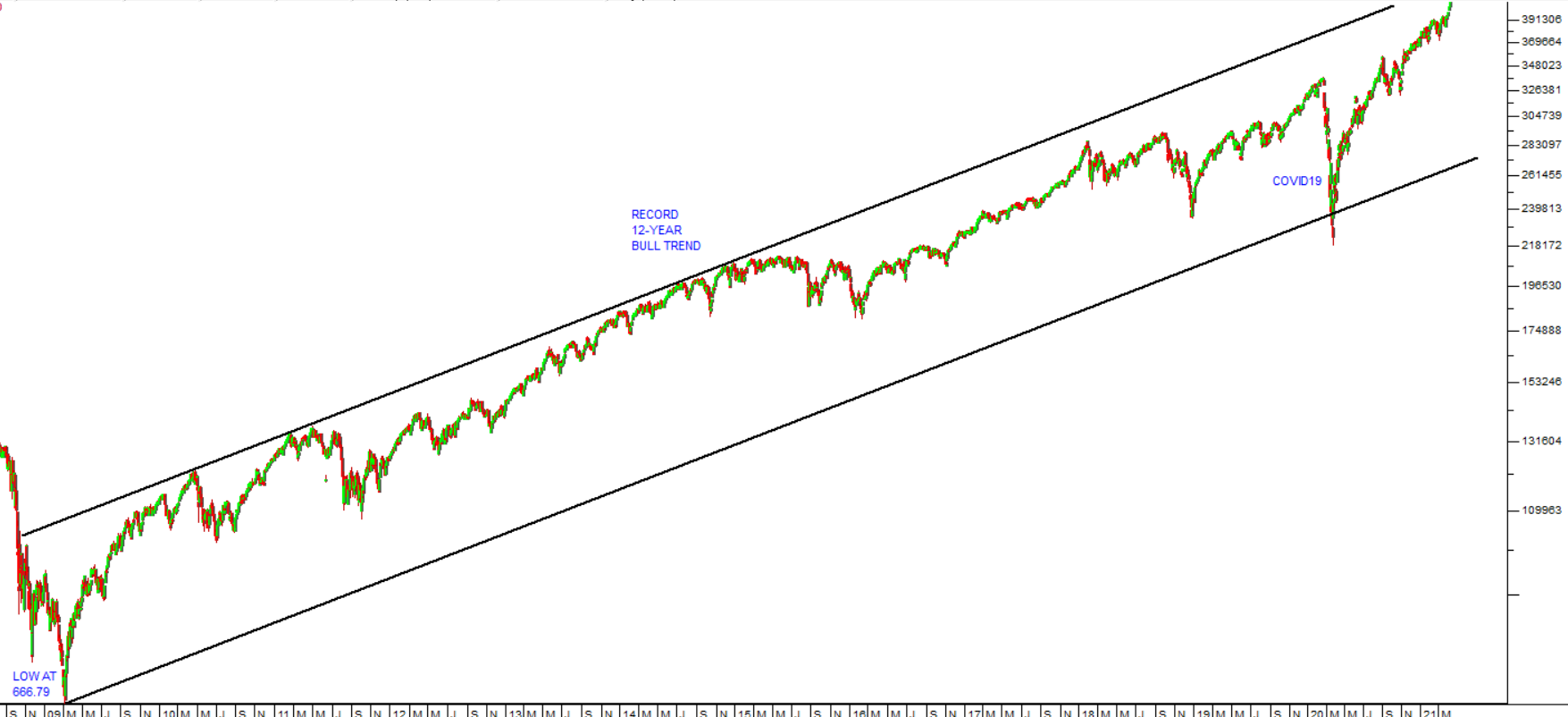12 Year Bull Trend
On 6th March 2009, just over 12 years ago, the S&P500 index made an intra-day cycle low at 666.79. It was the end of a 17-month bear trend which had seen the S&P fall by 57,4%. The world was in the teeth of the sub-prime crisis and negativity abounded. Investors were terrified. The response to the crisis was massive and world-wide. An unprecedented flood of cash was poured into world markets. Interest rates were dropped to around zero and fiscal stimulation was the order of the day.
This response to the combination of an economic crisis and a collapsing stock market was, by 2008/9, the standard procedure. It had been used very effectively to avert every recession and stock market bear trend since it was pioneered by the then newly appointed Governor of the Federal Reserve Bank, Alan Greenspan, way back in 1987. Each successive recovery, however, required ten times the cash injection of the one before.
In the 1980’s, after the 1987 crash it took just tens of billions of US dollars to turn the US economy around; in the 1990’s it took hundreds of billions and in the “noughties” it took trillions. In fact, recovery from the 2008 sub-prime crisis took such a large injection that the central banks of the world, led by the US Federal Reserve Bank, were forced to “print” about $12,5 trillion to recover the situation – and even then, it was touch-and-go for the next five years.
Eventually, however, confidence levels did begin to return, and people slowly began spending again. In fact, spending only really got going in 2019 - just before the COVID-19 shock. Faced with the pandemic, central bank governors, led by the US, once again resorted to Greenspan’s tried and tested remedy – massive fiscal and monetary stimulation. In this they were encouraged by the extraordinarily low levels of inflation world-wide. Persistently low world inflation rates over the past twenty years have been predicated by the massive increase in productivity which accompanied the spread of the internet and smart phones combined with the sharp drop in energy prices in the second half of 2014.
Now in 2021, a new round of monetary and fiscal stimulation, necessitated by the pandemic, has had the effect of compounding and amplifying the previous sub-prime stimulation which the world economy was still digesting. The effect has been dramatic. Asset prices have exploded. Stocks and bonds have reached record levels. Property is not far behind.
The point is that asset prices, especially equities, are rising exponentially.
It took 41 years until 3rd February 1998 for the S&P500 to reach 1000 points from its inception in its current form on 4th March 1957. It then took 16,5 years for it to reach 2000 on 26th August 2014. After that, it took 5 years to reach 3000 on 23rd July 2019 and, finally, it has taken just 21 months for it to reach 4000 on 1st April 2021. After reaching 4000 it took just 5 trading days to reach 4128 last Friday.

Bearing in mind that this chart has a semi-logarithmic scale, what you are looking at is whip-end of an exponential chart.
The S&P is rising more and more quickly. We are of the opinion that it will ultimately rise to an amazing 10000 points in the next few years. But then, what goes up exponentially must also, somewhere in the future, fall exponentially.
The point is that this asset bubble is being financed by unprecedented increases in national debt and combined with massive quantitative easing. The US national debt was under $900 billion in 1987 when markets crashed. It reached $28 trillion this year (https://www.usdebtclock.org/) and it is expected to rise $50 trillion in the next 4 years - by 2025. That is surely unsustainable.
We believe that at some point inflation, which has been nascent all these years, will suddenly erupt forcing central banks to raise interest rates rapidly. The result will probably be a deflationary crash and the almost immediate collapse of equity and debt prices. The question really is not if this will happen, but when.
As a private investor you need to consider and prepare for the probability that in the not-too-distant future the world will face an unprecedented collapse in asset prices. It is exceedingly difficult to know exactly when that will happen. In our view, it is still at least a few years and maybe as much as a decade away. So, you should “make hay while the sun shines” - but be ready to withdraw into the security of cash when you become nervous. In a deflationary crash, cash is king.
← Back to Articles